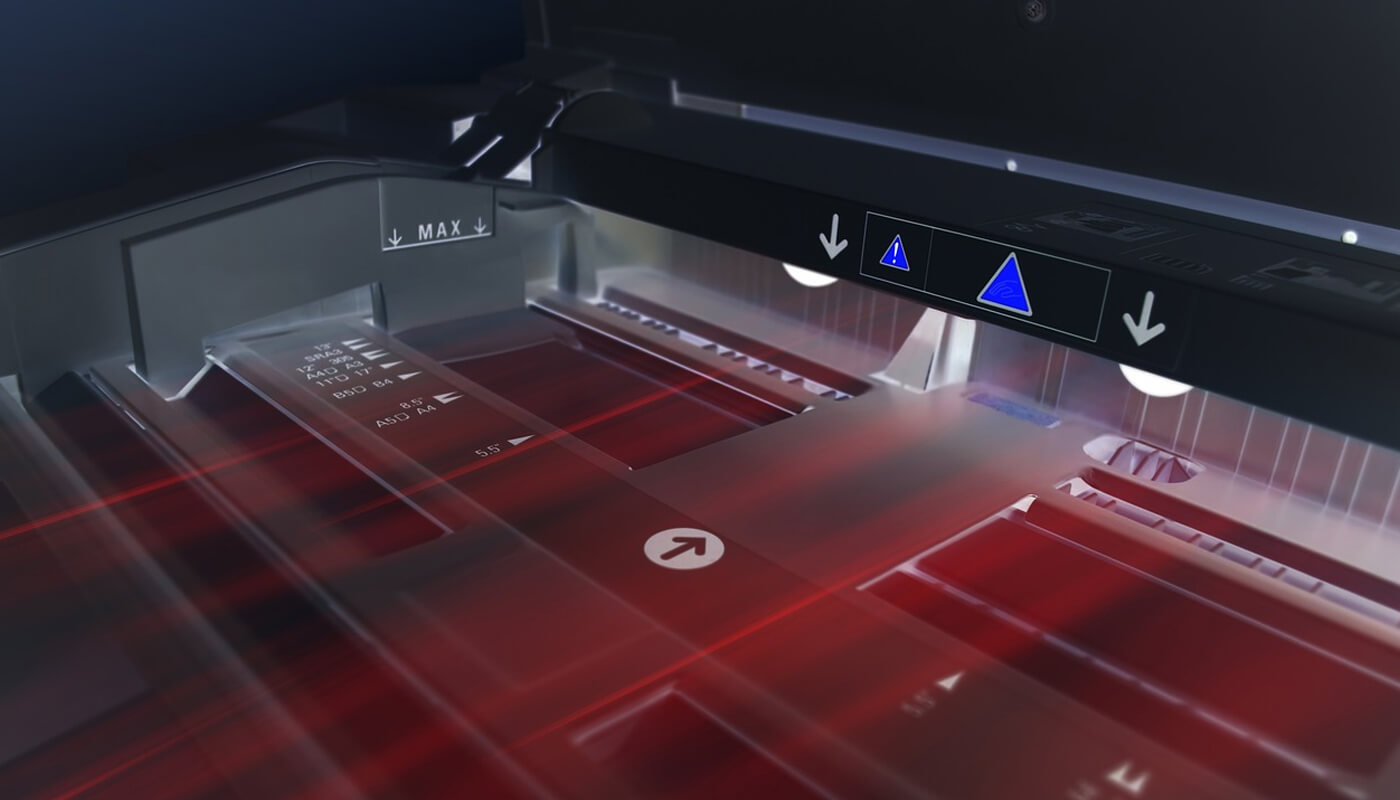- 05/04/2022
- by Miguel Sabater
Why Protecting Your Printers from Cybercrime Is a Must (And 8 Tips for Improving Printer Security)

Printing devices are often overlooked when it comes to security. But the reality is, cybercriminals can hack your printer to get confidential information.
Your printer is probably the last piece of computer equipment you thought needed protection from cybercriminals. But the truth is very different. Attackers actively try to locate the weakest links in security to gain access to and exploit valuable data. And among the weakest links is the printer. The thing with printers nowadays is that they have access to your devices, network, and the internet. This new open-access functionality makes them an ideal target for cyberattacks.
Unfortunately, many business owners overlook the importance of securing their printers and mainly focus on computers and mobile phones. Most people still perceive printers as internal devices that serve basic functions. For this very reason, they are an easy target for cybercriminals. Other than performing unauthorized print jobs, hackers can access confidential information as well as all connected computers and networks all through a printer.
You may also not be aware of the amount of valuable data your printer can store about you – tax files, bank details, financial records, employee information, personal information, etc. All a hacker needs to do is get into the operating system of your printer, and they can collect this sensitive data. If you’ve just realized the importance of securing your printer, keep reading. This article shares eight tips to help you do just that.
The 8 Tips
Tip #1. Make Sure Your Printers Are Configured Correctly
To start with, make sure to change the default password on your printer. Since anyone can access a printer remotely, a simple “123456” code won’t suffice. Second, make sure you’re using your own router to print files remotely. Never connect to “Guest” networks.
Tip #2. Inspect Print Trays Regularly
Alternatively, you can get a shredder for your office and shred the papers you don’t want anyone to see.
Tip #3. Install Malware and Firmware Updates
The good news is that many printers come with pre-built malware protection. HP, for example, installs the HP “SureStart” software in their printers that monitors approaching targets when the printer is on. The software can shut down the device if an attack comes its way. This is a great way to prevent attacks from spreading further within the network.
Tip #4. Limit Access to the Network
Tip #5. Update Your Printers
Tip #6. Install a Firewall
Tip #7. Encrypt Your Storage
Keep in mind that when you print a document, that file is often stored as an image within the printer and makes it an easy target for hackers. It’s why you should use an encryption tool to protect your data. Luckily, many modern printers have this tool pre-built. You can use the tool to set up a secure password that allows printer storage encryption, remove user IDs and ex-employee access, delete documents from the print queue once they’re printed, and much more.
Tip #8. Educate Your Employees
Finally, make sure it’s clear to them how they can use confidential information in your company.
It’s Time to Ensure Printer Security
Printers are the most overlooked devices when it comes to security. Given how most business owners consider them as merely internal devices whose sole function is to print documents, it’s no wonder they are a weak spot security-wise.
Whether you use printers in your office or at home, take a moment to see how you can enhance its security before your next printing job. As cybercriminals are a growing concern, each of us is responsible for protecting our data. Luckily, the tips from this article will help you bring your printer’s security to another level.
If you need more insight into protecting the security of your printers, get in touch with us today. We can set up a 10-15-minute chat to discuss how you can implement these changes and keep cybercriminals away.
This Article has been Republished with Permission from The Technology Press.



Comments (15)
ส่งsms
06/02/2025 - 5:05 pm… [Trackback]
[…] Read More here to that Topic: trucell.com.au/blog/why-protecting-your-printers-from-cybercrime-is-a-must-and-8-tips-for-improving-printer-security/ […]
certified translation bangkok
06/02/2025 - 5:34 pm… [Trackback]
[…] There you will find 31619 more Info on that Topic: trucell.com.au/blog/why-protecting-your-printers-from-cybercrime-is-a-must-and-8-tips-for-improving-printer-security/ […]
Nonameauto
06/02/2025 - 8:49 pm… [Trackback]
[…] Read More on that Topic: trucell.com.au/blog/why-protecting-your-printers-from-cybercrime-is-a-must-and-8-tips-for-improving-printer-security/ […]
Book Thailand Bus
28/02/2025 - 12:31 pm… [Trackback]
[…] Information to that Topic: trucell.com.au/blog/why-protecting-your-printers-from-cybercrime-is-a-must-and-8-tips-for-improving-printer-security/ […]
โอลี่แฟน
04/03/2025 - 7:24 am… [Trackback]
[…] Read More on on that Topic: trucell.com.au/blog/why-protecting-your-printers-from-cybercrime-is-a-must-and-8-tips-for-improving-printer-security/ […]
https://wp2-c12716-4.btsndrc.ac/preimushhestva-i-osobennosti-platformy-pocket-2/
12/03/2025 - 4:33 am… [Trackback]
[…] Read More on on that Topic: trucell.com.au/blog/why-protecting-your-printers-from-cybercrime-is-a-must-and-8-tips-for-improving-printer-security/ […]
Plinko App
12/03/2025 - 12:31 pm… [Trackback]
[…] Read More on that Topic: trucell.com.au/blog/why-protecting-your-printers-from-cybercrime-is-a-must-and-8-tips-for-improving-printer-security/ […]
slot99
13/03/2025 - 8:09 pm… [Trackback]
[…] Info on that Topic: trucell.com.au/blog/why-protecting-your-printers-from-cybercrime-is-a-must-and-8-tips-for-improving-printer-security/ […]
https://lebanditcasino.com/
03/04/2025 - 9:15 pm… [Trackback]
[…] Find More here to that Topic: trucell.com.au/blog/why-protecting-your-printers-from-cybercrime-is-a-must-and-8-tips-for-improving-printer-security/ […]
บาคาร่า ufa11k
11/04/2025 - 6:59 pm… [Trackback]
[…] Find More here to that Topic: trucell.com.au/blog/why-protecting-your-printers-from-cybercrime-is-a-must-and-8-tips-for-improving-printer-security/ […]
here
11/04/2025 - 7:52 pm… [Trackback]
[…] Find More on that Topic: trucell.com.au/blog/why-protecting-your-printers-from-cybercrime-is-a-must-and-8-tips-for-improving-printer-security/ […]
โป๊กเกอร์ 3 ใบ เกมไพ่ออนไลน์ ทำเงินง่าย บนเว็บ LSM99LIVE
12/04/2025 - 9:32 am… [Trackback]
[…] Read More here to that Topic: trucell.com.au/blog/why-protecting-your-printers-from-cybercrime-is-a-must-and-8-tips-for-improving-printer-security/ […]
fast-paced crash game
24/04/2025 - 1:37 am… [Trackback]
[…] Here you will find 64461 additional Information on that Topic: trucell.com.au/blog/why-protecting-your-printers-from-cybercrime-is-a-must-and-8-tips-for-improving-printer-security/ […]
south african transkei syringes
24/04/2025 - 2:51 pm… [Trackback]
[…] Find More Info here to that Topic: trucell.com.au/blog/why-protecting-your-printers-from-cybercrime-is-a-must-and-8-tips-for-improving-printer-security/ […]
specialty coffee Chiang Mai
26/04/2025 - 2:56 pm… [Trackback]
[…] Read More on to that Topic: trucell.com.au/blog/why-protecting-your-printers-from-cybercrime-is-a-must-and-8-tips-for-improving-printer-security/ […]